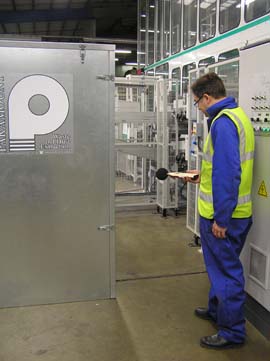 Unit 5, St Georges Industrial Estate
Unit 5, St Georges Industrial EstateWilton Road
Camberley
Surrey,GU15 2QW
Tel +44(0)127 669 1463 Fax +44(0)127 668 1271

Thousands of people die in Europe every year due to airborne contaminants inhaled at work. If your company employs processes that produce dust, mist, fume, gas or vapour, there may be a risk to the health of your staff. If this is the case, you will need to provide Local Exhaust Ventilation (LEV). This needs to be correctly specified, installed and maintained if it is to protect your workforce.
Paramount has many years of experience in the design, manufacture, installation and maintenance of LEV systems and are ideally placed to help you with both new systems and the inspection and maintenance of existing systems. If your existing system is not working correctly, we can recommend modifications and practices that will make it work. A Paramount inspection and report will include:
- Summary Action Plan.
- Final Assessment of Level of Control.
- Conclusion on control effectiveness.
- Visual Appraisal of the LEV System.
- Qualitative assessment of effectiveness.
- Measurements of airflows and comparisons with original commissioning data.
- Labelling of tested Equipment showing pass/fail status.
- All new Equipment is supplied with:
- Detailed LEV user manual.
- Logbook with details of checks and maintenance activities.
- LEV Commissioning Report.
Most LEV systems need a thorough examination and
test every year (minimum 14 months by law) to make sure that it is
functioning and protecting your employees correctly.
The law states that you must control exposure to these hazardous
substances (COSHH). Installing and maintaining LEV may help you do
this.
For videos of typical dust producing processes and sources, see
this page
from the HSE
 NOISE
NOISE
The Noise Regulations 2005 require employers to prevent or reduce
risks to health and safety from exposure to noise at work.
The regulations require employers to:
Assess the risks to employees from noise at work.
Take action to reduce the noise exposure that produces those risks.
Provide employees with hearing protection if the noise exposure
cannot be effectively reduced by other means.
Ensure the legal limits on noise are not exceeded.
Provide employees with information, instruction and training.
Carry out health surveillance where there is a risk to health.
The regulations specify certain exposure action values. If daily or
weekly exposure of 80 dBLeq is exceeded, employers must provide
hearing protection if it is asked for by workers. If daily or weekly
exposure of 85 dBLeq is exceeded, employers must enforce the use of
hearing protection.
There are many facets to the regulations which are covered in the
HSE Guide “Noise at work: Guidance for employers”.
Paramount have many years of experience dealing with noise within
our industry. This enables us to identify the source of the problem,
which is not always obvious. We have the correct approved and
calibrated Equipment to accurately measure your noise, and knowledge
of regulations and techniques to enable us to provide you with a
solution where possible.
Following a detailed survey, Paramount will make recommendations to minimise the effects of the noise. This may be one or more of the following:
- Change of process or workflow.
- Vibration Isolation
- Modification or adaptation of existing machinery
- New “quiet” machinery
- Installation of attenuation - Silencers, enclosures or barriers.
It is important to note that the regulations recommend that hearing protection is to be used only as a last resort, where other methods are unworkable.